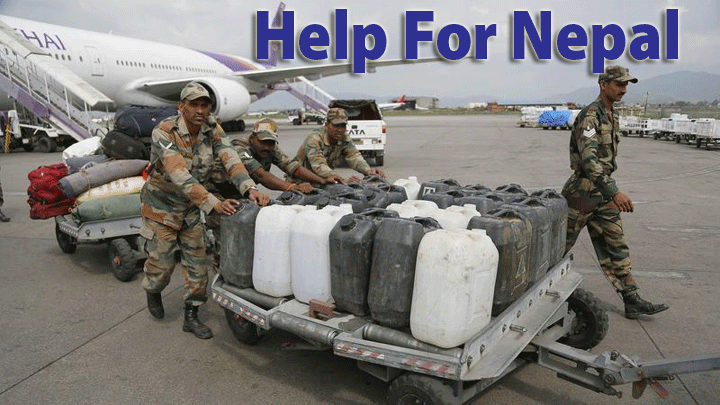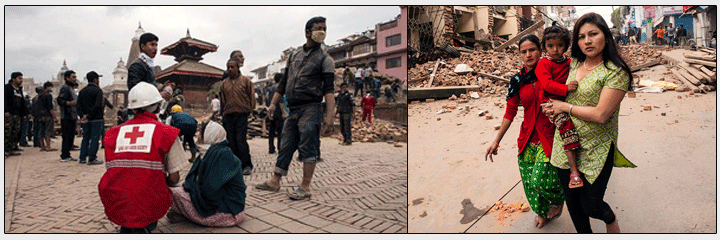
As aid agencies launch a
global relief effort after the horrible Nepal earthquake, victims continue
to descend upon Tribhuvan International Airport in Katmandu.
Amidst reports of more than 3,700 killed
and the destruction of homes and some of the most revered temples on earth,
airport buildings are jammed and roads and almost all available spaces
at the gateway are filled with travellers eager to either get out of the
country or go home.
But in the face of the death and destruction,
the airport seemed the safest place to be, FlyingTypers learned.
“There were men in monk's robes and
business suits, women in hiking gear and Indian saris.
“There were also scores of locals
whose homes had been damaged or destroyed in the massive earthquake,”
reported Associated Press.
“Soldiers in green fatigues scurried
to unload supplies from an Indian air force C-17 Globemaster as the new
traffic rolled in: a Sri Lankan military plane, a private jet, passenger
planes from China, Saudi Arabia, Turkey, and India.
“The plane traffic became so backed
up that numerous flights were turned away Sunday and forced to return
later.” (Associated Press)
 |
The massive earthquake in Nepal and its
aftershocks have triggered an international relief effort involving governments,
charity groups, and private volunteers from all corners of the globe.
The nation of 27.8 million people face shortages
of shelter, electricity, food and clean drinking water after Saturday's
magnitude 7.8 earthquake, according to United Nations relief workers on
the ground.
"The number of flights has been severely
restricted, so that’s been a challenge in getting people over there,"
said Garrett Ingoglia, vice president of emergency response for AmeriCares,
a nonprofit that delivers medical and humanitarian aid.
“Hospitals were trying to accommodate
a huge influx of patients and were running short of supplies like bandages
and trauma kits,” said Jamie McGoldrick, U.N. resident coordinator
in Nepal.
“Water supplies, a problem under normal
circumstances in this fast-growing city [Kathmandu], will almost certainly
run short."
The U.S. sent a military plane with a U.S.
Agency for International Development disaster assistance response team,
a search-and-rescue team, and 45 tons of cargo, the Pentagon reported.
But people who know Nepal will attest that
getting help where it is needed will be a logistical nightmare—infrastructure
that was challenging before the disaster now poses monumental problems.
At the same time, people who want to help
by contributing to the relief effort are being warned to beware of organizations
claiming to be first responders.
The Federation of Red Cross and Red Crescent
Societies are working on the ground to bring aid to Nepal. https://www.redcross.org
Also, The Salvation Army, where I have personally
served as Senior Advisor in Queens, New York, for many years, is accepting
contributions toward the relief effort in Nepal.
http://www.salvationarmyusa.org/
Geoffrey
|





